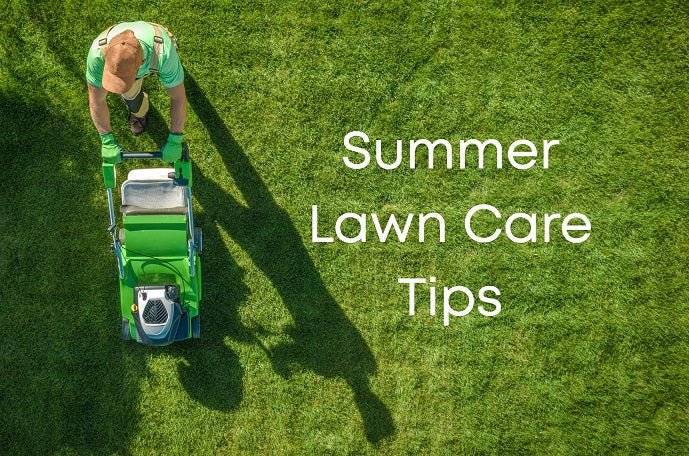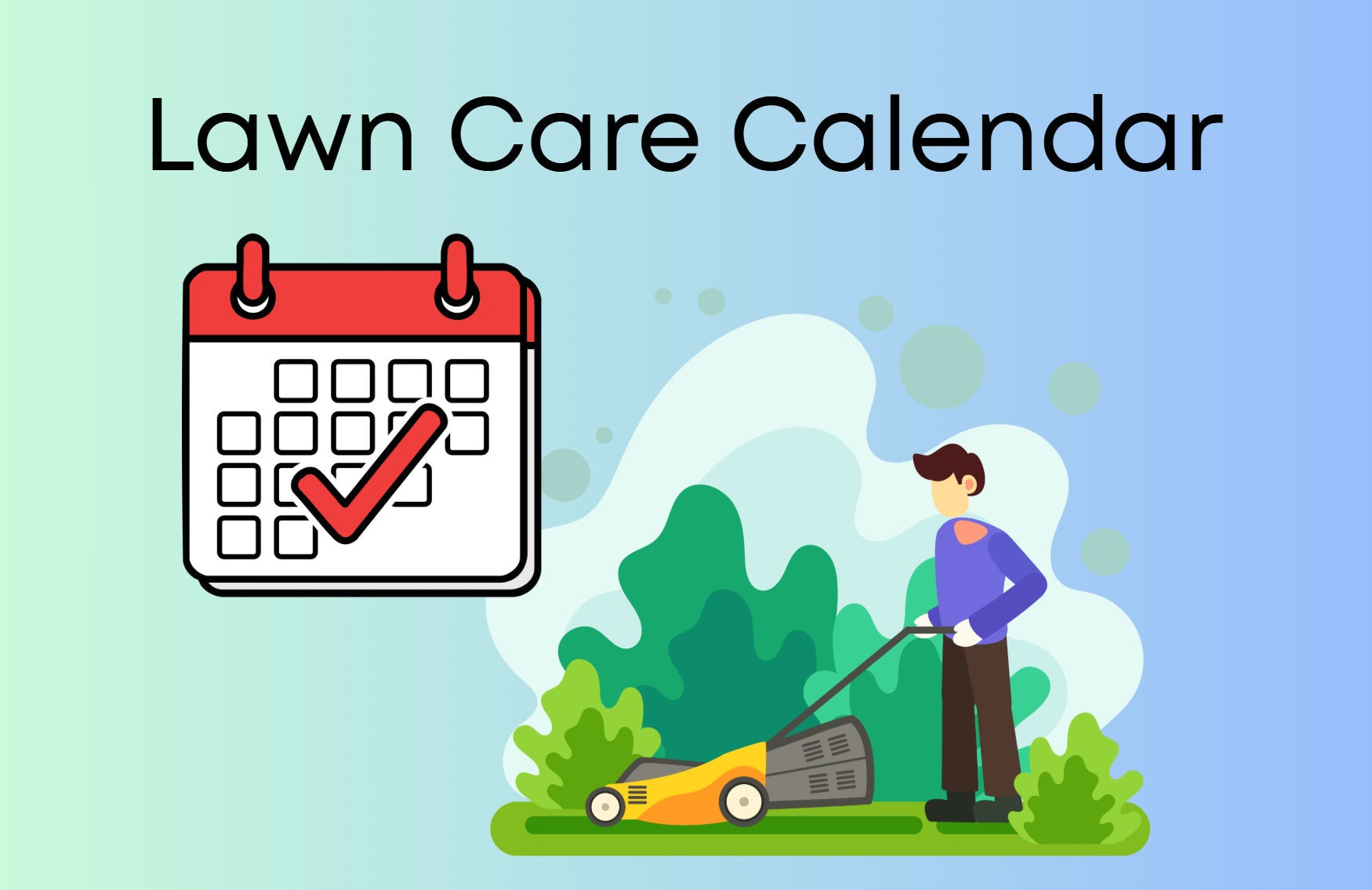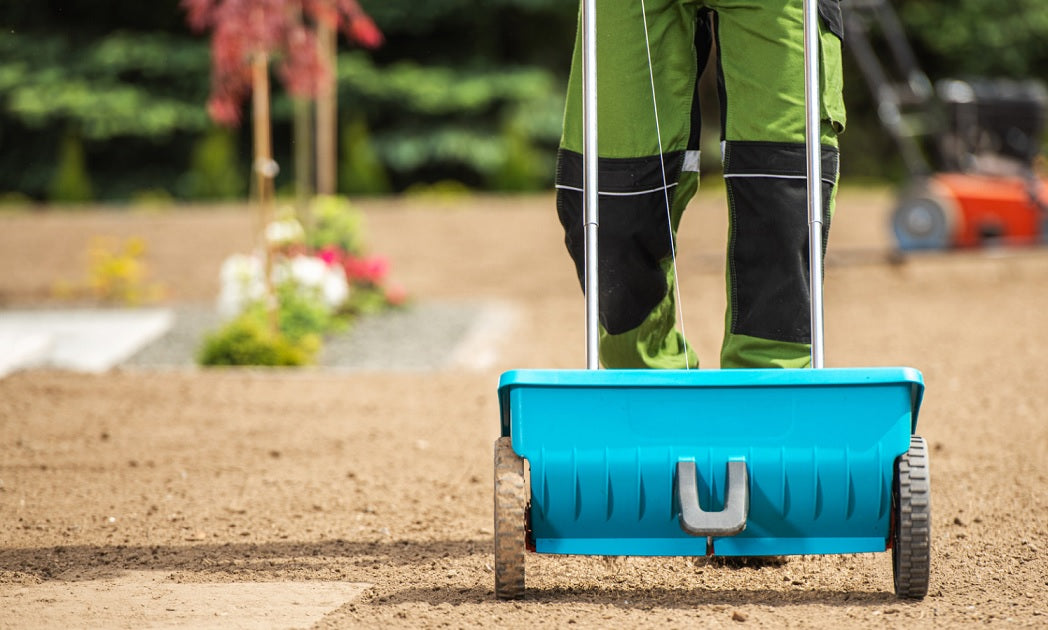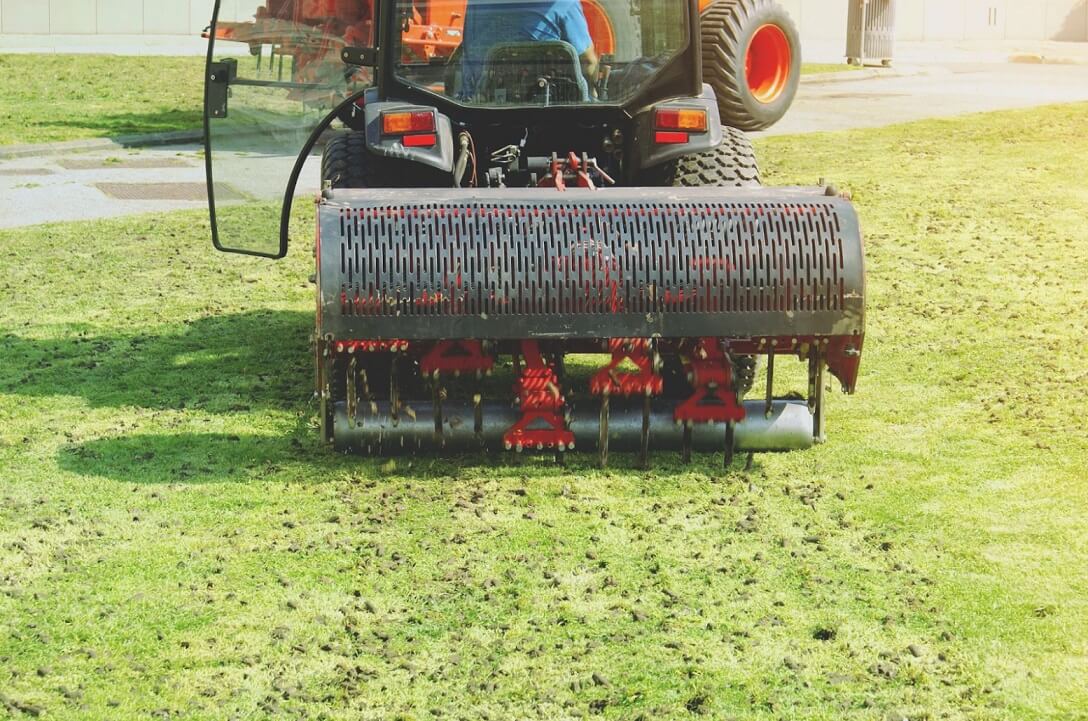Come back from a long weekend getaway only to find your lawn has become overgrown? Or maybe you skipped a few mows and now the grass feels impossible to tackle? If this is you, don't worry, we've got a step-by-step guide to teach you how to cut long grass and to get your lawn back under control in no time. Let's dive in.
Rules for Cutting Long Grass
Just like we had to follow rules back in school, cutting back overgrown grass comes with its own set of guidelines. Skip them, and you risk damaging a lawn that's already been neglected for too long.
The One-Third Rule
Before you start chopping away, the first green thumb rule is: only remove one third of the leaf blade with each mow. Wondering why?
Think of it like trimming your nails — clip too much at once and you hit the sensitive part. The same goes for grass: taking off more than one third of the leaf blade at one time can lead to cutting into the stem of the grass, and cause your lawn to die off due to the sudden reduction of available nutrients.
Mind the Grass Recovery Time
After the first trim, give your lawn time to heal before the next cut. A few days of rest allow the grass to regain strength, reducing the risk of brown patches or weak regrowth. Specifically, you need to space out your mowing sessions between 2 to 4 days, each time cutting off another third of the height until you reach your desired lawn level.For particularly overgrown lawns, you will most likely need to perform several mowing sessions over the course of a month.
Basic Guide to Mowing Overgrown Grass
Once you know the rules, it's time to take action. Here's a simple step-by-step guide for you to learn how to cut an overgrown lawn safely and effectively.
Prepare Your Lawn
Before you start, walk around the yard and clear away anything that might get in the way of trimming or mowing. Tall grass can hide surprises like rocks, sticks, or lawn care tools. You don't want them damaging your equipment or flying toward your face, right?Also, cutting overgrown grass is best performed when you have the weather on your side, ideally on a warm, sunny day, that's to say, cutting your grass when it is dry, you reduce the chance of bacteria and diseases setting in.
Get the Right Tools
You can not just get a goat to eat the long grass; your bare hands won't cut it. At this time, proper tools will be needed to get the job done. Your best bet is to start with a decent strimmer to take it down then finish with a robotic lawn mower that has adjustable cut height settings to get everything even. Besides, a scythe can also be an effective tool for tackling long grass, especially if you're dealing with smaller areas, but keep in mind that it requires a bit of practice.
Trim with a String Trimmer
If your lawn has run wild and the grass is above the height of your knees, don't rush straight in with a mower yet. Instead, use a string trimmer first to cut the blades down to about half their height. In this stage, you may notice the one-third rule doesn't fully apply, since taking the lawn down gradually will take too long and you will likely end up scalping the lawn regardless.

Gather the Clippings
Small pieces of clippings can be left behind as your lawn’s much-needed nutrition, while a heavy layer of cut grass on top can suffocate your lawn, and become a shelter for those hiding pests. Thus, it's suggested to rake up the clippings once the first cut is done. By gathering the clippings, you give your lawn more room to breathe and recover.
Weed It Out
Now that you've got your grass down to a more manageable level, don't rush to mow your lawn yet. Tall grass often hides weeds that have been quietly spreading, and now it's the perfect time to spot and pull them out. Pull small weeds by hand or with a weed puller, making sure to remove the roots. For larger patches of weed, apply a targeted herbicide directly on the weeds and wait2-4 days for it to work, and rake the debris away gently.
Let Your Mower Work
Before starting to mow your lawn, it is recommended to adjust the mower height so that it reduces the height of the grass by a further third. Set it to a higher setting for the first pass so you don't scalp the lawn. For instance, if your cut grass is now standing tall at 6 inches, set the deck to 4 inches high.
A mower that allows you to adjust the deck height on your phone, like Navimow i105 Robotic Lawn Mower, can be your lawn's good partner here — it mows your lawn autonomously and consistently without the extra effort, with centimeter-level precision, centimeter-level precision, avoids obstacles intelligently, and even charges itself automatically, the only thing you need to do is setting up the schedules on your phone and the grass will never get out of hand again.

Edge Your Lawn
If you want to get your lawn a neat and clean edge, it's suggested to use an edger or trimmer to cleanly carve out the boundaries by cutting excess growth leading onto paths or flowerbeds. Leave no blade untrimmed.It's a small step that makes a big difference in the overall appearance of your yard. By the way, you can find some lawn edging ideas online if you have no clues.
Tide Up with a Leaf Blower
Finally, you can clean up any leftover clippings, leaves, or debris with a leaf blower. A quick tidy-up leaves your lawn looking fresh and makes all your hard work stand out.
Lawn Care Tips for After Mowing
Now that you've managed to cut your tall grass, it's time to switch gears from rescue mode to maintenance mode and keep things in check.You don't want to let it become overgrown again, right?
Regular Mowing
Don't forget to mow regularly, it's the first line of defense against overgrowth. Aim to mow once or twice a week, depending on growth rates. About the tools, you can either manually mow your lawn every 10 to 14 days during the growing season. Or if you prefer less manual work, a robotic lawn mower can keep the grass at a steady height all season long.
Watering
The first important thing to do is to water after cutting your long grass, which helps the grass recover and grow back quickly.For instance, water it 1 to 1.5 inches per week in two or three sessions. The best time to water is early in the morning, when the sun isn't too strong and less moisture is lost to evaporation. Avoid watering at night, as damp conditions can invite fungus and disease.
Fertilizing
Fertilizer can provide a boost of nutrients to your newly-mowed grass. Specifically, it supports strong leaf growth from the roots below ground level. Stick with a balanced, slow-release formula so the grass absorbs nutrients over time rather than all at once.
Overseeding
If your lawn looks a little patchy after mowing, over seed the thin areas to encourage denser growth.You can try sprinkling grass seed over thin areas and lightly raking it in so the seeds make good contact with the soil.
FAQ
What's the best way to cut long grass?
Normally you can use a decent strimmer to take it down, then finish with the mower. Besides, a scythe can also be an effective tool for tackling long grass, especially if you're dealing with smaller areas.
Are you supposed to mow or trim first?
If the grass is above the height of your knees, always trim first. Knocking back the tall growth with a strimmer will make mowing easier, and it helps prevent your mower from clogging up, especially if your lawn's already thick at the bottom.
How do you stop grass from overgrowing?
To stop the grass from growing beyond one-third taller than your usual height, regular lawn maintenance is always the best approach. The combination of busy schedules and the weather can sometimes lead to a rapidly overgrown lawn.You can get a robotic mower to help. With the device, you can simply set the mowing height on your phone App and let the lawn mower keep the lawn trimmed consistently.
Final Thoughts
Cutting long grass can feel like a lot at first, but with a little patience and the right steps, it's completely doable. Start by following the one-third rule, the step-by-step rules, and tips for after mowing.
Remember, the best way to avoid overgrown grass in the future is regular maintenance. A robotic lawn mower can take the work off your shoulders, keeping your lawn neat and trimmed without you having to worry about it. With steady care, your yard will not only look good now but stay lush and green all season long.
More Blog
When is the Best Time to Plant Grass Seed?
Every lawn owner is eager to get rid of those bald patches and make the lawn lush and green from every corner. But you can’t just grab grass seeds and plant them whenever you want. Beginners often don’t know the...
Summer Lawn Care Tips: Smarter Lawn Care for a Better Season
Summer's finally here. A time when the days are long, the sun is high, and the sweet smell of freshly cut grass hangs languidly in the air. For many of us, a lush, green lawn is the centerpiece of summer,...
Month-by-Month Lawn Care Calendar for the US
Lawns are sensitive, so you have to do everything at the right time, whether mowing, applying fertilizer, or watering. Otherwise, you will end up ruining your lawn while trying to make it healthier. Beginner gardeners and new lawn owners often...
How to Overseed a Lawn in Spring?
Does your lawn look thin and patchy? Many people would have suggested overseeding it in spring. But you’re still confused about how to complete that process. It’s not just sprinkling some seed on the soil and hoping water will do...
When To Fertilize Your Lawn In Spring
The first time you fertilize your lawn in spring can set up healthy, lush growth for the entire year. However, getting the time right is essential to ensure excellent results. You might be wondering how to figure out the perfect...
Should You Aerate Your Lawn in Spring
Planning to aerate your lawn this season, but unsure because of the mixed views on spring aeration? Many homeowners face the same confusion. Some say spring works fine, while others warn against it, which makes the decision harder than it...






Share: